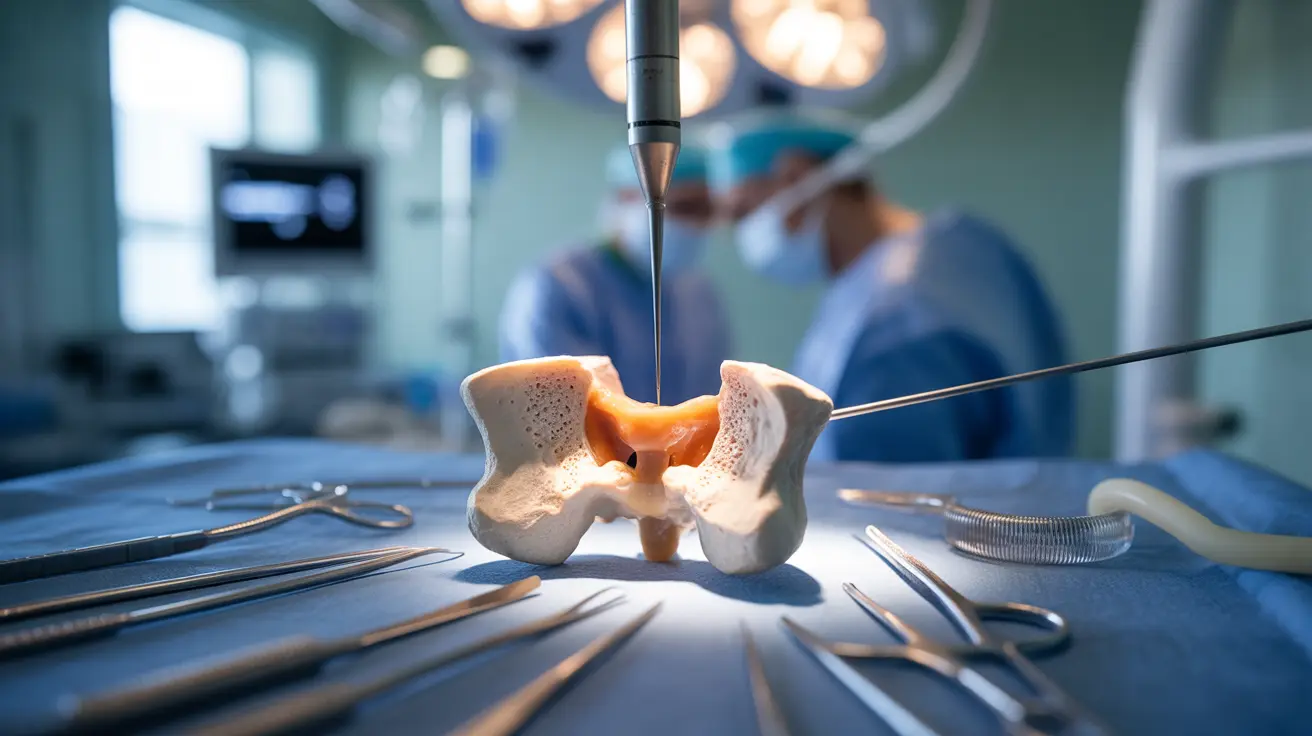When osteoporosis progresses to the point of causing fractures or severe bone damage, surgical intervention may become necessary. Understanding the various surgical options, their timing, and expected outcomes is crucial for patients facing treatment decisions for osteoporosis-related complications.
This comprehensive guide explores the different surgical approaches available for treating osteoporosis-related injuries, helping you understand when surgery might be necessary and what to expect from these procedures.
Types of Osteoporosis-Related Surgery
Vertebral Compression Fracture Procedures
Two primary minimally invasive procedures are commonly used to treat vertebral compression fractures caused by osteoporosis:
Vertebroplasty involves injecting special bone cement directly into the fractured vertebra to stabilize it and prevent further collapse. This procedure can provide immediate pain relief and help restore vertebral height.
Kyphoplasty uses a balloon device to create space within the compressed vertebra before injecting bone cement. This technique often achieves better height restoration and may reduce the risk of cement leakage compared to vertebroplasty.
Joint Replacement Surgery
For severe osteoporosis-related damage to major joints, particularly the hip or knee, total joint replacement may be necessary. These procedures require special consideration due to the compromised bone quality associated with osteoporosis.
Surgical Decision-Making Process
Determining Surgical Necessity
Surgery is typically recommended when:
- Fractures fail to heal with conservative treatment
- Severe pain persists despite medication
- Significant loss of mobility occurs
- Risk of further complications is high without intervention
Pre-Surgical Considerations
Before proceeding with surgery, doctors carefully evaluate:
- Bone density measurements
- Overall health status
- Medical history
- Potential risks and benefits
- Alternative treatment options
Recovery and Rehabilitation
Recovery from osteoporosis-related surgery requires a carefully structured approach to ensure optimal healing and prevent future complications. Physical therapy typically begins within days of the procedure, with a focus on gentle movement and gradually increasing activity levels.
Post-Surgical Care
Key elements of post-surgical care include:
- Pain management strategies
- Proper wound care
- Gradual return to activities
- Bone-strengthening exercises
- Nutritional support for bone health
Frequently Asked Questions
When is surgery recommended for osteoporosis-related fractures and what are the surgical options?
Surgery is recommended when conservative treatments fail, when there's severe pain or mobility issues, or when fractures pose a risk of further complications. Options include vertebroplasty, kyphoplasty, spinal fusion, and joint replacement, depending on the location and severity of the damage.
How do vertebroplasty and kyphoplasty differ, and which one is better for osteoporotic spinal fractures?
Vertebroplasty involves direct cement injection, while kyphoplasty uses a balloon to create space before cement injection. Kyphoplasty often provides better height restoration and may have a lower risk of cement leakage, but the choice depends on individual factors like fracture age and severity.
What are the risks and complications of spinal fusion or joint replacement in people with osteoporosis?
Common risks include implant loosening, poor bone healing, infection, and adjacent segment problems. Osteoporosis patients may face additional challenges due to compromised bone quality, potentially requiring specialized implants or techniques.
How long does recovery take after osteoporosis surgery and what rehabilitation is needed to prevent future fractures?
Recovery typically takes 6-12 weeks, depending on the procedure. Rehabilitation includes physical therapy, bone-strengthening exercises, and lifestyle modifications. Ongoing bone health management is crucial to prevent future fractures.
Can osteoporosis be managed without surgery and when should I consider medical treatments or lifestyle changes instead?
Many cases of osteoporosis can be managed non-surgically through medication, exercise, dietary changes, and fall prevention strategies. Surgery is typically reserved for severe cases with fractures or significant structural damage that don't respond to conservative treatment.




